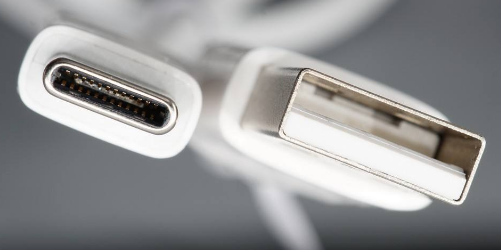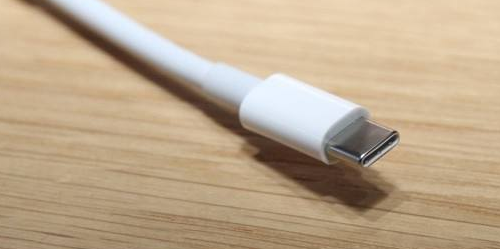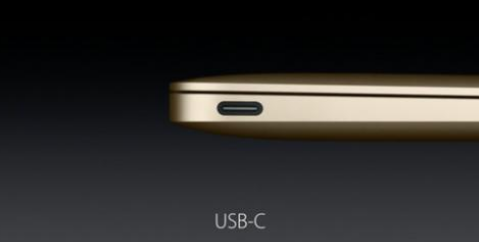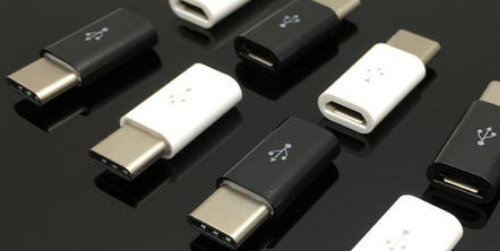Overview of USB Type-C interface characteristics
发布时间:2023-02-16作者:Shenzhen BBJ technology co., LTD点击:656
As the saying goes, if you are not afraid of no problems, you are afraid of not knowing them. The problems existing in the USB family interface just leave enough room for the improvement of the new generation USB interface. In fact, USB Type-C interface is also improved according to these problems. Judging from the current technical version, the current USB Type-C interface has the following characteristics:

One is reliable and non-directional plug-in.
The previous USB feature is directionality. Whether it is a USBA interface or a USBMicro family interface, users need to carefully identify the direction of the socket before plugging in, otherwise it will not be plugged in, or it will damage the equipment. However, the USB Type-C interface does not have such a problem. It has no directionality, as long as it is inserted correctly, whether it is positive or negative, it is OK.
Looking further, the USB Type-C interface designs all the signal pins on the "tongue" in the center of the interface, with 12 positive and negative pins, and most of them are symmetrically arranged. Each group has 12 signal interfaces, including grounding, USB 2.0 data signal, USB 3.0 high-speed signal, power supply signal, sideband (non-USB traditional signal) signal and other data interfaces. Generally speaking, the design of positive and negative symmetry is a greater contributor to the directionality of USB Type-C interface.
In terms of size, the size of USB Type-C is about 8.3mm*2.5mm, which is basically equivalent to the current USB 2.0 Micro-B, which is a common mobile phone charging port, and is far smaller than the size of USB 3.0 Micro-B, which is one of the reasons why it can be easily popularized in miniaturized devices.

Second, it has a longer service life and is more resistant to plugging.
Generally speaking, the durability of this kind of equipment is guaranteed by design on the one hand and material on the other. After the design of USB Type-C interface cancels the positive and negative differences, the possibility of user's wrong insertion is greatly reduced, and it is difficult to plug and unplug violently. Not only that, there were some defects in the design and structure of USB Micro family before, especially the "split" plug like USB 3.0 Micro-AB, which was easy to be damaged.
The USB Type-C interface maintains the same size as USB Micro B, and uses a completely symmetrical appearance and adopts circular arc connection. The stressed parts are mainly external metal shells, which have higher strength and are less likely to be damaged. The central data channel is protected by the arc shell, which is difficult to be damaged. The design requirements show that the USB Type-C interface can be plugged and unplugged for more than 10,000 times without damage. If it is plugged and unplugged for three times a day, the USB Type-C interface can be used for at least 10 years.

Third, it can support the communication protocol of USB3.1 and support high-speed transmission.
The pin definition compatibility of USB Type-C interface is very good. In addition to two sets of Tx/Rx channels supporting 10Gbps data transmission and realizing 20Gbps data transmission capability, separate pins are reserved for the previous USB 2.0 devices, so that they can smoothly transition to USB Type-C.. From this point of view, the USB Type-C interface itself can be used with any standard USB transmission protocol, from USB 1.0 to uSB3.1.
Of course, as a brand-new interface, USB Type-C interface is currently used with USB 3.0 and USB3.1 specifications, which are called USB Type-C Gen1 and USBType-C Gen2. The former uses USB 3.0 specification with a transmission speed of 5Gbps, while the latter uses USB3.1 specification with a transmission speed of 10Gbps. At present, Apple uses USB Type-C Gen1 on the MacBook, and adopts USB 3.0 standard. The actual theoretical data transmission capacity is 500 MB/s.

四是全面增强的数据传输能力
从USB Type-C接口的发展角度来看,USB组织可真的没将它当做简单的数据传输接口来设计,而是将其定义为“能够连接高性能外设的多功能连接器”,目前的消息是,USB Type-C接口已经可以支持多屏显示,4K超清分辨率传输,在存储方面支持SSD、RAID、混合硬盘模式等,未来还将进一步拓展更多的连接模式(比如显示接口标准组织VESA就正在准备将DisplayPort接口和USB Type-C“融合”到一起)。由于USB Type-C接口设计的灵活性,未来甚至可能出现支持USB Type-C的PCI-E转接设备出现,更进一步拓展USB Type-C的适用范围。
集中到移动设备上来看的话,USB Type-C接口支持视频传输无疑大大增强了移动设备使用的方便性。现在很多流行的移动设备都只会配备一个USB接口,不再额外提供HDMI接口,因此在接驳诸如4K超清设备时往往不够方便。但是USB Type-c接口支持视频传输后这个困难就迎刃而解了,用户可以使用USBType-C来连接4K显示设备实现大屏幕播放。根据相关数据表明,在USB Type-C Gen2也就是使用USB3.1协议时,USBType-C接口能够实现4K Cinema分辨率,30Hz的视频播放,其播放能力和带宽与HDMI 1.4相当,使用比后者还更为方便,值得期待。此外,USB Type-C接口也已经提供了HDCP支持,版权保护也不再成问题,只要未来操作系统和软件能够提供对USBType-C的视频输出支持,显示器也使用USB接口的话,不需要电源线也不再是难题了。
五是更强的供电能力
之前的USB接口在供电能力上已提升了多次,但是依旧不能满足用户和产品的需求。这次USB Type-C接口干脆直接将供电能力上限提升至100W,并针对不同的设备提供不同的供电方案。USB Type-C接口能够实现五种不同的供电配置,包括传统的5V@2A(10W)方案以及新加入的12V@1.5A(18W ) 、12V@3A(36W )、20v@3A(60W)以及更大的20V@5A(100W)。更大的供电能力不但能更快速的充电,还能使得部分设备不再需要外接电源可以依靠USB Type-C来直接使用。不过考虑到USB Type-C接口的电能来自于主机中的电源,因此在供电能力方面,USB Type-C受到的制约也比较多,未来也可能有一些更好的解决办法出现。
六是更出色的抗干扰能力
在USB3.0 Micro接口的信号干扰问题出现后,如何保证目前高速接口的信号屏蔽就成为一个重要的问题。USBType-C接口宣称在这方面做出了优化,不再会干扰到附近的设备。不过目前这方面内容没有太多资料,因此只有等产品大面积应用后才能进一步考察了。
看了上述介绍,想必你已经对USB Type-C接口有了比较深入的了解。从USB规范1996年正式发布到现在,USB这个寿命已经接近20年的传输协议,正在全新的设计和规范下焕发出新的生命力。USBType-C依靠更小的尺寸、更高的可靠性、更出色的扩展性、更快速的充电能力、更宽广的连接范围和更优异的抗干扰设计,必将成为未来存储设备、移动设备的标准配置。